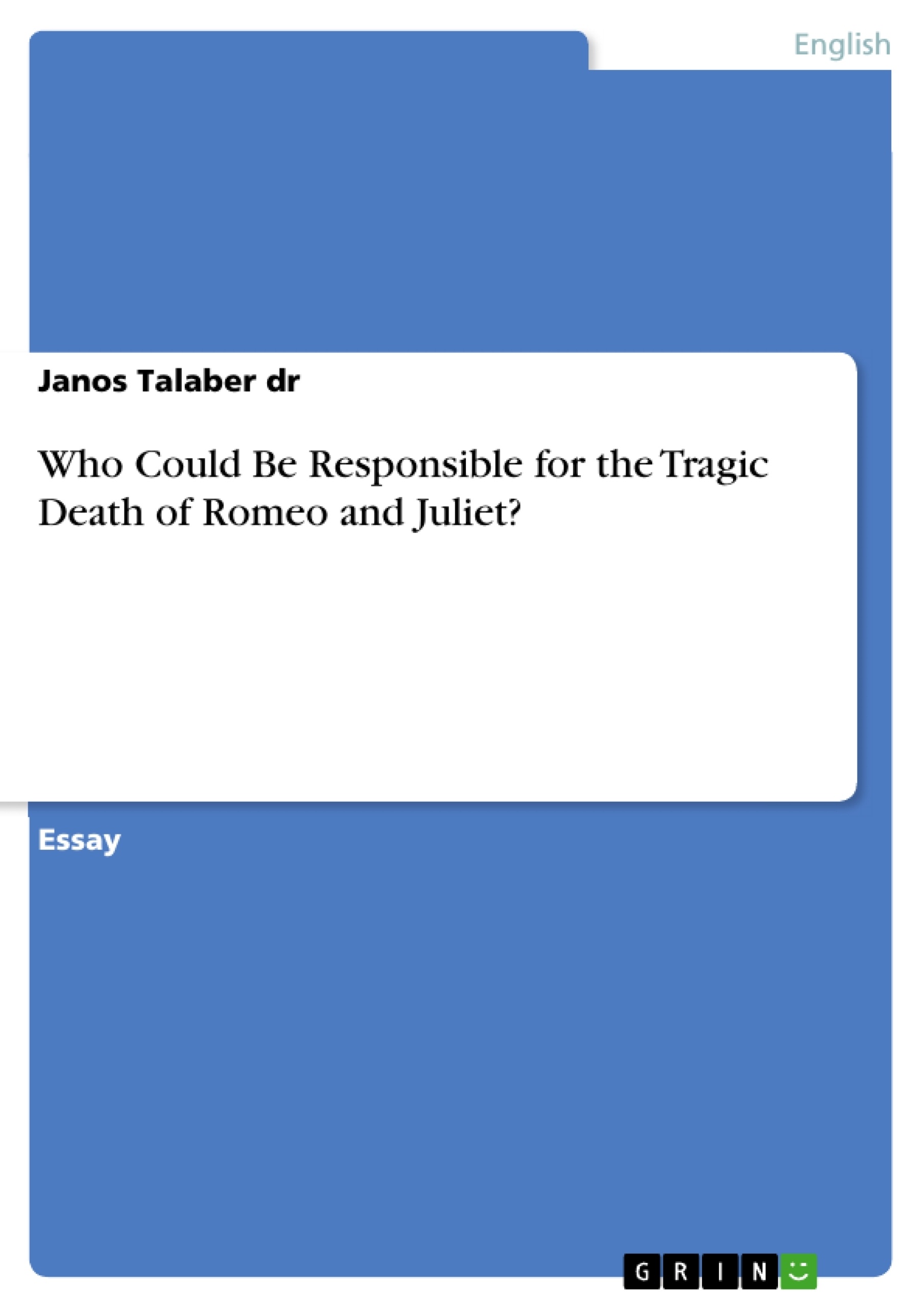There is a whole library of books dealing with Shakespeare. Half of this library would sum him up as the world’s greatest dramatist-poet. Even when we are interested in his career as a lyrical and epic poet, we cannot avoid alluding to the dramas. The aim of this short study is to put the basic concept of the drama under a magnifying glass from a legal as well as moral aspect. We cannot, obviously, change the basic conflict or other features that inevitably led to the tragic end; however, it would be a noble and interesting task to draw up hypotheses which might have changed the climax as well as the dreadful outcome of the play. What moral and legal liability can be identified? What moral roles do the different characters play? Who could be blamed and what for? Who should not have been involved in the conflict?
Table of Contents
- Introduction
- The Feuding Families
- The Montagues
- Mercutio
- Benvolio
- Abram and Balthasar
- The Capulets
- Tybalt
- The Nurse
- Other Characters
- Paris
- Escalus
- Friar Laurence and Friar John
- Conclusion (Summary Excluded)
Objectives and Key Themes
This study analyzes Shakespeare's Romeo and Juliet from legal and moral perspectives, exploring the chain of events leading to the tragic deaths of the protagonists. It aims to identify those responsible and assess the moral implications of their actions.
- Moral responsibility and culpability within the play.
- The role of individual characters in escalating the conflict.
- The impact of the feud between the Montague and Capulet families.
- Legal interpretations of the events, particularly regarding the implications of murder and self-defense.
- The examination of the characters' actions and motivations, and their impact on the play’s tragic climax.
Chapter Summaries
The introduction establishes the play's context and the study's aim: to explore the moral and legal responsibility for the deaths of Romeo and Juliet. The analysis focuses on the key characters, their actions and motivations, and their contributions to the escalating conflict. The section on the Montagues explores the roles of Mercutio, Benvolio, Abram, and Balthasar, examining their actions and motivations within the context of the feud. The section on the Capulets focuses on Tybalt and the Nurse, again analyzing their actions and assessing their contribution to the escalating conflict and tragic outcome. Finally, the analysis considers the roles of less prominent characters such as Paris, Escalus, and the Friars. The summary avoids the play's conclusion to prevent spoilers.
Keywords
Romeo and Juliet, Shakespeare, tragedy, legal responsibility, moral culpability, family feud, character analysis, murder, self-defense, Elizabethan drama.
- Quote paper
- Janos Talaber dr (Author), 2007, Who Could Be Responsible for the Tragic Death of Romeo and Juliet? , Munich, GRIN Verlag, https://www.grin.com/document/124759




